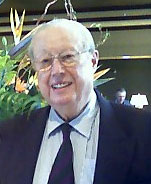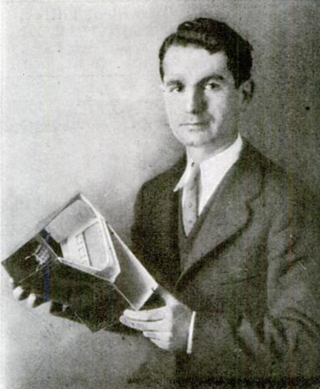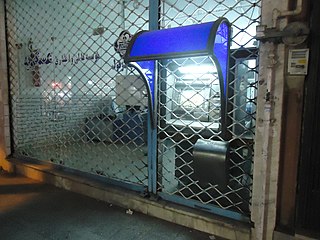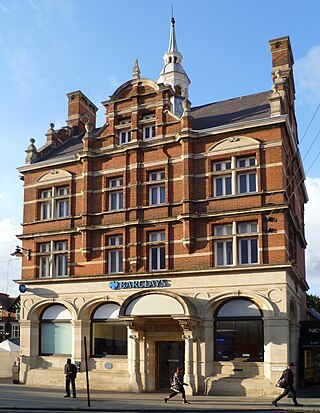Related Research Articles

An automated teller machine (ATM) is an electronic telecommunications device that enables customers of financial institutions to perform financial transactions, such as cash withdrawals, deposits, funds transfers, balance inquiries or account information inquiries, at any time and without the need for direct interaction with bank staff.

A secure cryptoprocessor is a dedicated computer-on-a-chip or microprocessor for carrying out cryptographic operations, embedded in a packaging with multiple physical security measures, which give it a degree of tamper resistance. Unlike cryptographic processors that output decrypted data onto a bus in a secure environment, a secure cryptoprocessor does not output decrypted data or decrypted program instructions in an environment where security cannot always be maintained.

A personal identification number (PIN), or sometimes redundantly a PIN number or PIN code, is a numeric passcode used in the process of authenticating a user accessing a system.
The year 1966 in science and technology involved some significant events, listed below.

John Adrian Shepherd-BarronOBE was an India-born British inventor, who led the team that installed the first cash machine, sometimes referred to as the automated teller machine or ATM.

Luther George Simjian was an Armenian-American inventor and entrepreneur. A prolific and professional inventor, he held over 200 patents, mostly related to optics and electronics. His most significant inventions were a pioneering flight simulator, arguably the first ATM and improvement to the teleprompter.

The IBM 3624 was released in 1978 as a second-generation automatic teller machine (ATM), a successor to the IBM 3614. Designed at the IBM Los Gatos lab, the IBM 3624, along with the later IBM 4732 model, was manufactured at IBM facilities in Charlotte, North Carolina and Havant, England until all operations were sold to Diebold, tied to the formation of the InterBold partnership between IBM and Diebold. Comparable ATM units marketed by other companies at the time were the Diebold TABS 9000 and NCR 5xxx.

Walter Hunt was an American mechanical engineer. Through the course of his work he became known for being a prolific inventor. He got first involved with mechanical innovations in a linseed producing community in New York state that had flax mills. While in New York City to promote his inventions he got involved in inventing the streetcar gong that was used throughout the United States. This then led him to invent other useful items like the safety pin and sewing machine. He invented the precursor to the repeating rifle and fountain pen. About two dozen of his inventions are used today in basically the same form as he had patented them. In spite of his many useful innovative creations he never became wealthy since he sold off most of his patent rights to others at low prices with no future royalties. Others made millions of dollars from his safety pin device.
The Diebold 10xx series is a third and fourth generation family of automated teller machines manufactured by Diebold.
Nicholas Ian Shepherd-Barron, FRS, is a British mathematician working in algebraic geometry. He is a professor of mathematics at King's College London.

Automated cash handling refers to the process of dispensing, counting, and tracking cash within various business environments such as banks, retail stores, check-cashing outlets, payday loan/advance providers, casinos, and more. This process is facilitated through the use of specially designed hardware and software, with the primary goals of preventing loss, deterring theft, and reducing the need for constant manual oversight of cash operations.

Automated teller machines (ATMs) are targets for fraud, robberies and other security breaches. In the past, the main purpose of ATMs was to deliver cash in the form of banknotes, and to debit a corresponding bank account. However, ATMs are becoming more complicated and they now serve numerous functions, thus becoming a high priority target for robbers and hackers.
Wilfrid Philip Shepherd-Barron, MC, TD, LlD (1888–1979) was a British civil engineer and army officer.

A timeline of United States inventions (1890–1945) encompasses the ingenuity and innovative advancements of the United States within a historical context, dating from the Progressive Era to the end of World War II, which have been achieved by inventors who are either native-born or naturalized citizens of the United States. Copyright protection secures a person's right to his or her first-to-invent claim of the original invention in question, highlighted in Article I, Section 8, Clause 8 of the United States Constitution which gives the following enumerated power to the United States Congress:
To promote the Progress of Science and useful Arts, by securing for limited Times to Authors and Inventors the exclusive Right to their respective Writings and Discoveries.
Mohamed M. Atalla was an Egyptian-American engineer, physicist, cryptographer, inventor and entrepreneur. He was a semiconductor pioneer who made important contributions to modern electronics. He is best known for the inventing the MOSFET in 1959, which along with Atalla's earlier surface passivation processes, had a significant impact on the development of the electronics industry. He is also known as the founder of the data security company Atalla Corporation, founded in 1972. He received the Stuart Ballantine Medal and was inducted into the National Inventors Hall of Fame for his important contributions to semiconductor technology as well as data security.
Utimaco Atalla, founded as Atalla Technovation and formerly known as Atalla Corporation or HP Atalla, is a security vendor, active in the market segments of data security and cryptography. Atalla provides government-grade end-to-end products in network security, and hardware security modules (HSMs) used in automated teller machines (ATMs) and Internet security. The company was founded by Egyptian engineer Mohamed M. Atalla in 1972. Atalla HSMs are the payment card industry's de facto standard, protecting 250 million card transactions daily as of 2013, and securing the majority of the world's ATM transactions as of 2014.

The ATM Industry Association (ATMIA), originally the ATM Owners Association, was established in 1997 in the United States as a global nonprofit trade association to service an industry that built around the global growth of the ATM.
Edward "Gordon" Perry Jr. was an American inventor and businessman who served as chief research engineer for Texas Instruments. He was also a co-founder of Recognition Equipment, Inc, (REI). He is best known for inventing the first commercially viable Retina Character Reader.

References
- ↑ UK Patent No.1,197,183 - 2 May 1966.
- ↑ "So whose razor-sharp mind has the edge?". The Scotsman. 15 September 2007. Archived from the original on 22 May 2010. Retrieved 17 January 2010.
- 1 2 3 4 5 6 7 "James Goodfellow (born 1937), inventor and first patentor of the automated teller". Scottish Engineering Hall of Fame. Retrieved 24 April 2020.
James Goodfellow is now generally accepted as being the inventor of the ATM.
- 1 2 3 4 5 6 Jeffries, Stuart (20 January 2005). "Pins and needle". The Guardian. Retrieved 24 April 2020.
Who invented the ATM as we know it? We have to think it was James Goodfellow in Scotland for holding a patent date of 1966.
- ↑ Speirs, Kathleen (2 April 2018). "Banking inventor James Goodfellow OBE goes back to school in Paisley". Scottish Daily Record. Retrieved 24 April 2020.
- ↑ Milligan, Brian (25 June 2007). "The man who invented the cash machine". BBC. Retrieved 24 April 2020.
- ↑ "Royal honour for inventor of Pin". BBC. 16 June 2006. Retrieved 5 November 2007.
- ↑ "How the PIN number was invented". BBC. 2 May 2016. Retrieved 5 May 2016.
- ↑ "Pioneers - Series 2 - James Goodfellow - BBC Sounds".